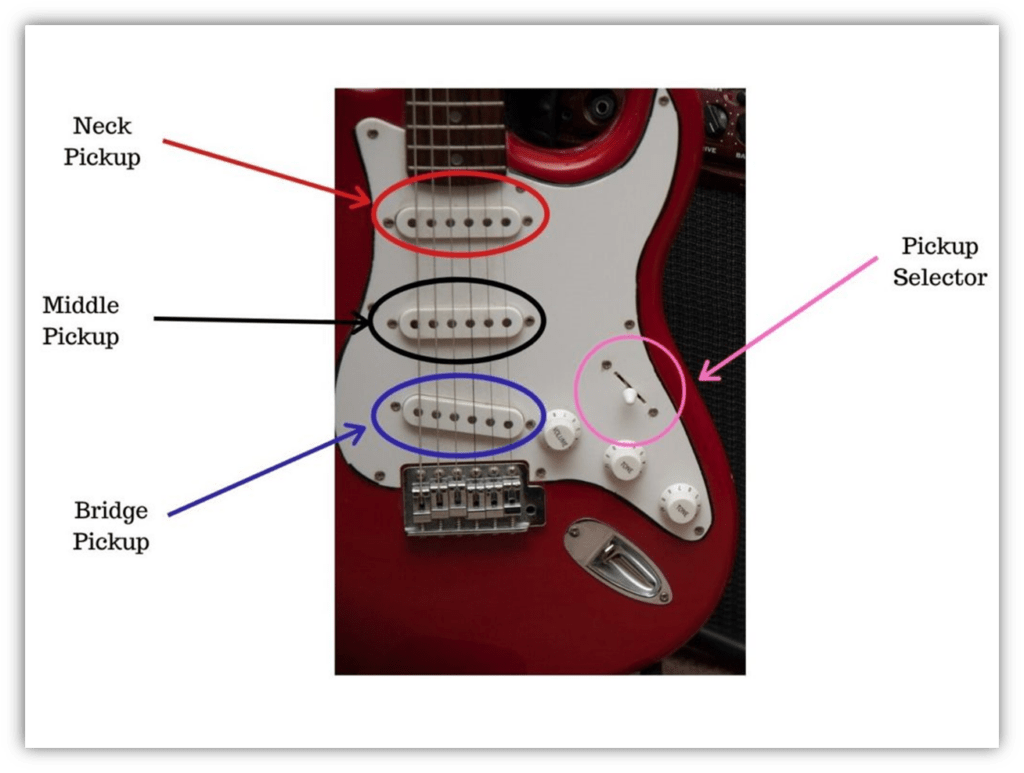Music Theory For Non-Musicians
…if there was ever an art where breaking the rules is one of the rules, it’s music.
redditor u/COMPRIMENS
This occasional series is about how music is made, and it’s for people who don’t already make music. It’s part music appreciation and part music theory.
I hope to cover rhythm, melody, intervals, chords, inversions, and more. Maybe we’ll get into extended chords and modes. Let’s see!
Episode 13: Pet Sounds
The rock band Jackyl released a song called “The Lumberjack” in 1992. It featured singer Jesse James Dupree on the chainsaw.
That’s right, he played a chainsaw solo. It starts at about 1:40.
There are people who play the hand saw. They get it vibrating with a violin bow and make different pitches by bending the saw blade. Bending the blade puts more tension on it and it vibrates at a higher frequency producing a higher note, just like tightening a guitar string.
Here’s a quick lesson:
The chainsaw, on the other hand, produces different pitches by revving the engine. It’s just like your car or any other internal combustion engine. The higher the RPMs, the higher its whine.
Granted, the chainsaw has a limited range. It can only play a few notes, but with practice, you can play discernable melodies on it. Those melodies can be played on other instruments like, say, the flute.
No one will ever confuse the chainsaw with the flute. Why? Well, they sound completely different. The flute produces a breathy, round, organic sound full of overtones. The chainsaw’s sound is gritty and whiny, full of oil and sawdust.

“Please. Let’s see you fell a Douglas Fir.”
An instrument’s sound is called its timbre. (Don’t confuse timbre with timber, though a chainsaw would come in handy for that, too.) Timbre is what lets you hear music and say, “that’s a flute, that’s a guitar, that’s a chainsaw, and that’s a trumpet,” even when they play the exact same notes. You can educate your ears to hear them separately as they’re playing in unison.
Think of the pitch as the note you would sing. Think of timbre or tone as the note’s quality, whether it’s boomy or twangy or warm. Some people can sing perfectly on pitch but have voices with grating timbres that you wouldn’t want to listen to for long. It’s the timbre of the bagpipes that prevents it from being in the Top 40 often.
Not only does each instrument have its own timbre, each individual instrument of the same type sounds different.
Two violins made by the same manufacturer will sound slightly different due to the wood and the craftsmanship. That’s why violinists will pay millions of dollars for a Stradivarius. They sound better.
(That’s the belief, anyway. Blind tests have shown that Stradivari don’t sound all that much different from other violins. Having said that, the reason that I have 18 bass guitars is they each have their own sound. And they look cool.)
The weather can be part of it, too.
Humidity affects wood, and temperature affects, well, everything. Cold contracts and heat expands, whether the instrument is made of wood or metal. Not only does that throw everything out of tune, it changes the way the vibrations happen, and that changes the timbre. Maybe it’s only a very slight change, but you can hear it.
Then there are the intentional changes in timbre. These can range from changing the shape of your mouth when you sing, to opening and closing the bell of a trombone with a fedora, to running an electric guitar through a bank of effects pedals.
Since the invention of electric instruments, we’ve been able to vary tones like never before. If your instrument goes through an amplifier, you can play loud enough to distort the signal. That’s why rock bands play loud, to get huge distortion. Some rock musicians in the 1960s would slice their speakers with razor blades to get that buzzy sound.
And it’s why a chainsaw fits right in.
Nearly every electric guitar has a tone knob. This changes the guitar’s timbre by lowering the high frequencies. That’s the bright, metallic twang of the string. Turn the tone knob down and you’re left with a warmer, darker, bassier timbre.
Some guitars have a single pickup. A pickup is like a microphone under the strings. It “picks up” the strings’ vibrations and converts them to an electrical signal that is sent to the amplifier. The pickup’s placement helps determine the guitar’s sound. When it’s closer to the bridge, the sound will be brighter and twangier. Closer to the neck, warmer and darker.
That’s why some guitars have multiple pickups and switches that allow the player to choose one or the other, or how to blend them together.
Some guitars give each pickup its own volume so you can choose how much of each pickup to hear.
The Fender Stratocaster has three pickups and a five-way selector switch.

Other guitars have even more elaborate systems. And that’s just on the guitars.
Amplifiers have features to help change the sound. The most common are equalization controls, commonly known as EQ, to change the low and high frequencies. My little Marshall guitar amp has two gain knobs for distortion, a treble knob, something called “contour” that’s really more of a midrange control, a bass knob, a volume control, and reverb.

Reverb, short for reverberation, is very common on amps and effects pedals. If you’ve ever gone into an empty room, with no carpet, curtains, or furniture, you’ll recognize reverb. The sound bounces off everything and takes longer to decay than it would in a plush, fully furnished bedroom. Some amps have something called spring reverb that uses an actual metal spring to vibrate enough to recreate that empty room sound.
There are tons more ways to control sound, just on the amplifier. I won’t go into them all but they can get pretty complex.

There are also thousands of outboard effects, like guitar pedals, to further alter a guitar’s sound.
The first pedal most guitarists buy is a tuner. When you step on its switch, it prevents the signal from going any further. The audience really doesn’t want to hear you tune up.
And while it’s muted, it visually shows you if the note you’re playing is flat or sharp so you can adjust accordingly.

That has nothing to do with the instrument’s sound, but now you know what the guitarist is doing when he’s turning the tuning knobs while looking at the floor. Tuning pedals make it possible to tune no matter how much noise the drummer is making, dammit.
I’m guessing the second most popular effect is distortion. Distortion pedals let you get that loud, overdriven amplifier sound without the ear-splitting volume. They add more curves and angles to the already complex waveform to make it sound like you’re overdriving the amplifier. Of course, there’s more to it than that but that’s the basic concept.

The great thing about pedals is you can daisy chain them.
One guitar can run through multiple pedals, and the guitarist can turn them on and off individually, combining sounds to create new ones.
It is, of course, possible to get carried away.

One of the more philosophical discussions in music theory is whether music is more enjoyable before you know anything about it (when you just hear the complete sound), or after you learn how to compartmentalize each instrument.
When you learn to hear the chord structures and analyze the harmonies and empathize with the thought processes the musicians went through to create this music, do you lose the ability to love the piece as a whole?
Once you learn how music is made, is there a mental switch you can turn off to hear it as you used to?
TNOCS.COM contributing professor of musical philosopy Bill Bois
Malcolm Young of AC/DC said his favorite music to listen to when he’s at home is jazz. That seems incongruous for a guy who plays basic rock, but I have a guess about it:
I used to listen to classical music precisely because I didn’t understand it. I could enjoy the overall sound. But now that I understand it better, I think I enjoy it more.
An offshoot of that question is whether musicians change their timbre to help the overall sound of the piece, or to make their own part stand out from the rest. Are they in it for the music or to call attention to themselves? Would “Purple Haze” be as iconic if Jimi Hendrix had played it on an acoustic guitar?
No, it wouldn’t be the same at all. Each instrument’s timbre is part and parcel of the whole. That’s why we musicians fuss so much over our instruments. That’s not to say no musicians are driven by ego; many are.
But you get to be professional by “serving the song.” You do what’s required to make the song as good as it can be, and nothing more.
And part of serving the song is having the right timbre for it. It’s why you choose between an electric guitar or an acoustic one.
Or an electric bass or an upright.
Or an electric chainsaw or a gas guzzler.
Let the author know that you liked their article with a “heart” upvote!





Great write-up. I love thinking about timbre, as it is a bit subtler and weirder than something like pitch. And there seems to be a more of a subjective, psychologically-constructed aspect to it as well.
“Blind tests have shown that Stradivari don’t sound all that much different from other violins.” There have been psychological experiments testing wine experts’ ability to tell expensive wine from cheap wine, and even white from red, and blind tests really screw up even the experts. Tellingly though, they usually think they have the right answer, even when they’re wrong.
I will admit that I had a somewhat similar experience regarding sesame seeds. My wife and I were convinced that we could tell black from white seeds; they just seemed so obviously different! We put our hypothesis to the test, blindfolding one another in turn, and then given 10 tastes each in randomized order. We could not guess them! And early on, we did think we noticed differences, but those differences reflected reality at a 50/50 chance.
Not to say we’re always making this stuff up. With timbre I think that some cases are harder than others, and other contextual factors make a difference feel more salient. Obviously a chainsaw is different from a flute. …RIGHT??
Line of the Day: “Don’t confuse timbre with timber, though a chainsaw would come in handy for that, too.”
That theramin guy I posted a while ago also plays the hand saw. As always, he has some charming videos:
https://www.youtube.com/watch?v=q7cMJn0HAdE
Timbre is absolutely subjective. Some people hate the twang of traditional country vocals, but those vocals have sold millions of records. Personally, I can’t stand Mark Knofler’s guitar tone, “Sultans Of Swing” irritates me to no end, but he seems to be doing OK for himself.
The sesame seed story is hilarious.
As for bagpipes, I kind of think of them as like a bluejay’s call. It’s like equal parts beauty and cringe.
Maybe even more so is the Japanese equivalent (in sound at least), the hichiriki, played in their “gagaku” court music:
https://www.youtube.com/watch?v=78LMkqLQJ5w
It sounds like the old joke that defines “discordance” as two fretless bassists trying to play in unison.
I never tire of “Sultan’s Of Swing”. Top 10 all time song for me. But now I am hesitant to give it a listen. I am afraid I will hear something I never heard before. Yikes!
The sesame seed blind taste test had me giggling like a dope. It’s even funnier considering sesame seeds are a pet peeve of mine. I still complain ever time I get a Whopper at BK – “what purpose do sesame seeds serve? Honestly. They are just annoying…”
Whaaaat…I love sesame seeds so much. My wife and I have so many products that are sesame flavored. I highly recommend banana and black sesame smoothies. So good!
Guy goes to a tool store to buy a chainsaw.
The server sells him the top-of-the-line model, saying that it will cut through over 100 trees in one day.
The guy takes the chainsaw home and begins working, but after a day’s work, he’s only cut down two trees.
“I’ve cut for hours and hours and only finished two trees?” he asks himself. “This thing is junk. I’m going to return it and get my money back.”
The guy brings the chainsaw back to the store.
“Hmm, it looks okay,” says the server, and starts up the chainsaw.
The man jumps back in shock and screams, “WHAT’S THAT NOISE??”
Thanks, mt58, for the Stratocaster graphic and all the cool links. The Ravi Shankar bit is hilarious.
My sincere pleasure to ride your coattails.
Your weekly hard work, good humor, and ongoing friendship to all of us is respected and appreciated.
Ok, that is too funny this is your topic for this week, because I had the following thought last week watching Mick Mars play with Motley Crue-
Is it the musician that has a distinctive sound, or is it the instrument?
I don’t think Mick switched out his guitars more than a handful of times, and he primarily stuck with one that appeared to be well loved and decades old. But damn if it didn’t sound EXACTLY how it did 30, 40 years ago on these tracks. And it got me thinking, does Mick still use the same guitar, like Nile Rodgers or Sting, that he always has, and that’s why it sounds so distinctive? Or like Eddie Van Halen, where the majority of his stuff was unmistakably Eddie’s playing but he did mix it up alot too?
Then there’s Clapton, who seems distinctive no matter what guitar he’s playing?
The easy answer is its both in tandem – the musician finds a style that suits them, which is usually dependent on the equipment. But is one more prevalent over the other???
Not looking for an answer, it’s just an interesting discussion!
I’m glad you’re not looking for an answer because I don’t really have one except that it’s both player and instrument. What the ratio is between them is anyone’s guess.
I don’t know anything about Mick Mars’ gear but it wouldn’t surprise me if he’s been using the same stuff forever. Once you’re known for a sound, you may as well give the people what they want.
I’m a big Edge fan. I imagine a lot of U2 fans naming their dog/cat “The Edge”, just so they can announce “The Edge” whenever the dog/cat walks into a room. I like his playing on “Pride(In the Name of Love)”. Young me thought he sounded god-like. I saw The Edge in It Might Get Loud. I wish I didn’t. The Edge explained how he got that ringing sound with an effects pedal. I guess I didn’t want to know. It’s like a magician explaining his/her craft.
It’s insane that he needs a tech just to run his effects, but man, it works.
That’s a pretty funny coincidence. Just this morning in the car, a U2 deep track, Raised By Wolves, was playing. I paid a bit more attention than usual as I noticed the Edge’s guitar work. It’s good stuff.
“The great thing about pedals is you can daisy chain them”.
I seem to recall this is what Tom Scholz did to get that distinctive Boston sound. If it was truly that easy it makes me wonder why it had not been done more often. Or perhaps it was and the sounds of other bands who did it elude me.
It’s done all the time, just not necessarily as well.